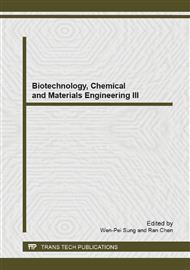p.287
p.292
p.296
p.300
p.304
p.308
p.312
p.316
p.320
Morphological and Compositional Changes in the SiO2/SiC Interfacial Layer Induced by Thermal Annealing of Different Temperature
Abstract:
The authors have systematically investigated the effects of different annealing temperatures in Ar atmosphere on the SiO2/4H-SiC interfaces by scan electron microscope (SEM) and energy dispersive spectrometer (EDS). Results show that the annealing temperatures are strongly correlated with the morphological and compositional changes of SiO2/4H-SiC interface. Annealing at 600 °C can significantly improve the quality of SiO2/4H-SiC interface. However, the sample annealed at 350 °C and 900 °C displays some particles. The reason for such improvement in the quality of the SiO2/4H-SiC interface after moderate temperature annealing at 600 °C can be explained by the formation and consumption of carbon clusters and silicon oxycarbides during annealing.
Info:
Periodical:
Pages:
304-307
Citation:
Online since:
January 2014
Authors:
Price:
Сopyright:
© 2014 Trans Tech Publications Ltd. All Rights Reserved
Share:
Citation:


